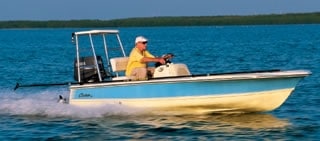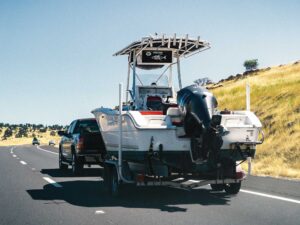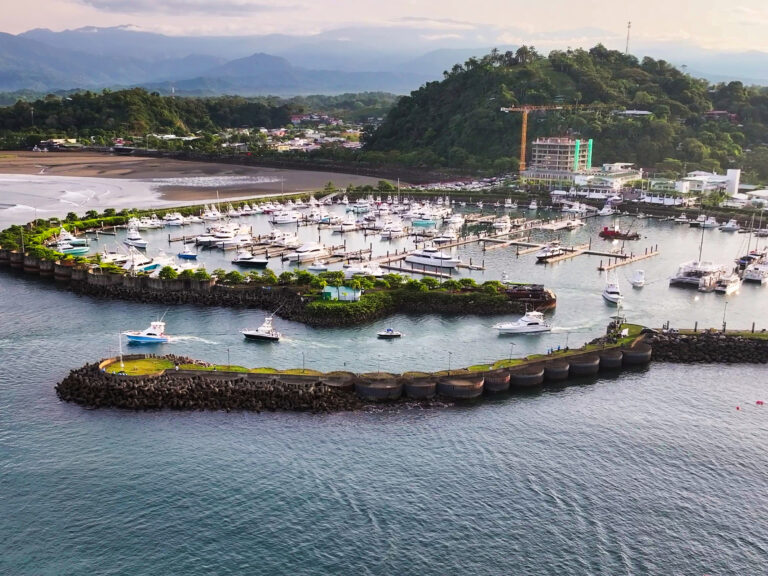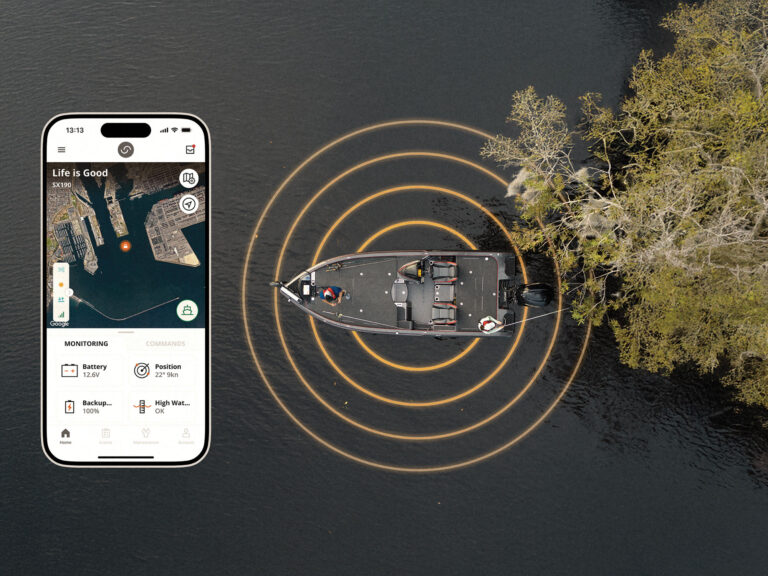
Scout Boat Company has entered the technical realm of flats fishing with the introduction of the new 170 Costa. It’s a move the company hasn’t taken lightly. The competitive world of flats skiffs can be a tough proving ground for a company intent on breaking into this demanding market. Just to make sure it came out of the chutes strong and equipped to handle the needs of shallow-water anglers, Scout retained the services of veteran flats angler and pioneer Stu Apte to assist in the design of the 170. It’s a partnership that paid off, if the first models off the line are any indication.
Apte is no stranger to the nuances of flats boats. Often these details are things boat manufacturers are unwilling to pony up for in the design and development stages of a new model. It’s a painstaking, detail-laden business building a specialized shallow-water fishing platform. In the case of Scout, Apte found a company willing to go the extra mile in developing a hull that genuinely meets the high demands that will ultimately be placed on it.
The Scout penchant for careful finish is evident throughout. The hull is hand-laid, but the hatches are vacuum-bagged. The latter are dense, sturdy and easily carry an angler’s weight when he’s walking across the stern platform or along the gunwales. Hatches on the gunwales? Yup, the rod racks along the sides of the hull are reached beneath hinged lids. This arrangement eliminates the reach-under-and-find-the-rod-tube routine typical of many skiff designs. The hatches are well fitted and as solid as the rest of the deck underfoot. They make for easy access to the six full-length fly-rod racks on either side of the hull. Tip tubes are generous and fully lined for rod protection. The racks themselves are roomy, with bungee-cord tie-downs for security when running. Even the spacing of the racks has been given a little extra thought. There’s plenty of clearance on the bottom rack so that fly reels rest well above the cockpit sole.
Our test day took place in the Florida Keys. Twelve knots of wind out of the southwest provided a customary backcountry chop, and the 170 floated over it. The soft entry, flared bow and relatively high freeboard made for an exceptionally dry ride. The hullsides feature a molded-in spray strake. It looks like a small reverse chine about halfway up from the waterline, but it never hits the running surface. Its purpose is spray deflection, and it appears to handle the chore very well.
With the 90-horsepower Yamaha we were running, the skiff cruised comfortably at 3800 rpm. Opened up to 5200, it tops out at 47 mph, according to manufacturer’s tests. With the Yamaha 115 four-stroke, top end is 54 mph at 5600 rpm.
The hull design lies somewhere between a hard and a soft chine. When negotiating tight turns in the channels that wind through the flats, the hull holds a line, with just enough sideslip to eliminate the jarring grab of a hard-chined design. Control is tight and accurate at speed, yet remains soft and easy on the passengers.
| ¿ SPECIFICATIONS LOA: 16′ 9″ Beam: 7′ 4″ Draft: 7″ Dry weight w/o power: 780 lbs. Max hp: 115 Fuel: 30 gals. Base price w/o power: $10,836 |
Chine softness really comes into play once you’re fishing. It’s a quiet, quiet hull on the flats. Despite a relatively high freeboard, it is remarkably unaffected by wind, and poling from the platform mounted over the motor is efficient. The pivot point lies just ahead of the console, so the boat cruises the shallows as if it’s being steered by front wheels. The bottom shape eliminates the need to get up a head of steam to overcome inertia, and the response nearly eliminates the overcompensation that requires expert technique. With eight degrees of deadrise at the transom, this boat moves in very shallow water. The poling tower is tall, to allow for installation of the Yamaha four-stroke, but there are a couple of non-skid-covered crossmembers that provide good footing when climbing on.
The true business end of any skiff is the bow casting platform, and this one is a luxury office. A raised lip around the bow lets you know exactly when you are approaching the edge without having to take your eyes off the water. In the middle rear of the platform is a collapsible mini-tower that raises up on stainless supports. This gives the caster better visibility when things are tough and, when you don’t need it, it folds into the deck. Bow storage is reached with the tower raised, beneath a flush hatch. The low-profile center console is unobtrusive, yet elevates the wheel enough to allow six-footers to drive while standing up straight. Molded in to the front of the console is a cushioned seat, which covers the molded cooler.
Overall, the 170 Costa is one fine flats skiff, which should come as no surprise given its pro design team. It’s packed with features that flats fishermen of all levels will appreciate, and the price is right too. If you’re in the market for a quiet, great-running skiff for working the shallows, the 170 is definitely worth a close look. Scout Boats, Summerville, SC, (843) 821-0068; www.scoutboats.com.









